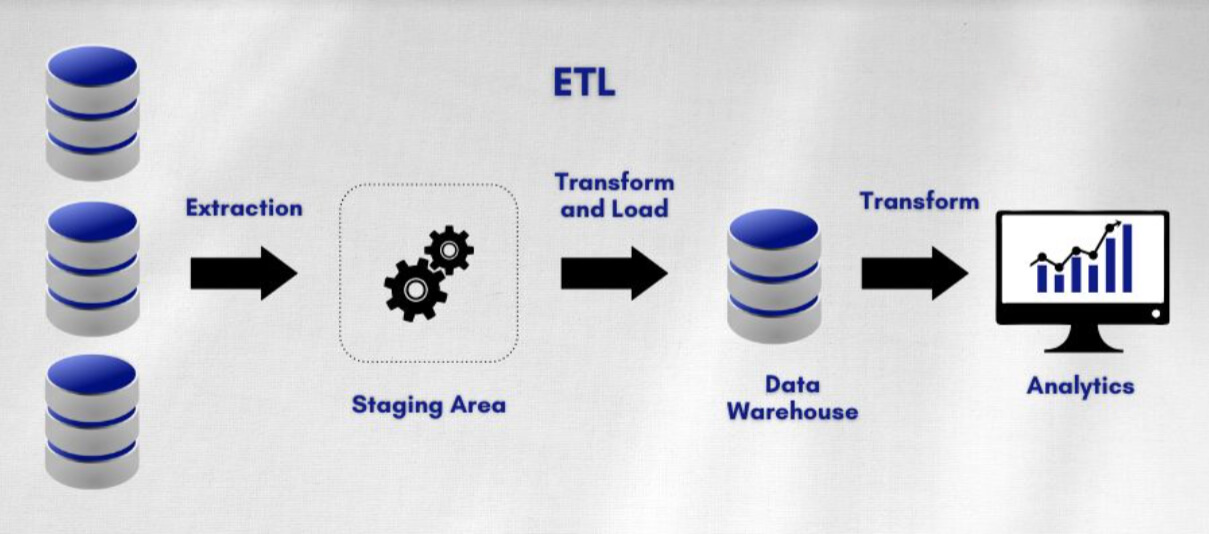What is ETL? How to choose the best ETL Tool for your business?
Why do we need ETL?
It is important to properly format and prepares your data for loading into your data storage system. In addition to extracting, transforming, and loading data, it offers some of the following business benefits:
Provides a deep historical background for your business:
- It provides a unified view of data to power business intelligence solutions and facilitates analysis and reporting. It enables context and data aggregation, allowing businesses to generate more revenue.
- Allows validation of data transformations, aggregations, and calculation rules.
- You can compare sample data between source and target systems.
- Increase productivity with repeatable processes that do not require extensive hand programming.
- Improve the data accuracy and auditability that most organizations need to comply with regulations and standards.
ETL Architecture

How does the ETL process work?
Data extraction
Data can be extracted from databases, web services, flat files, and many other sources. Only new or changed data is incrementally extracted from the source system if the source system can track the creation or last modified date of record changes. Full data extraction from the source system may be necessary if the source system cannot track newly created or modified records. The extraction frequency (full or incremental) is based on your requirements for how often your data warehouse needs to be synchronized with the source.
Data conversion
The ETL transformation step helps create a structured data warehouse and takes place in a staging area before the data is moved into the data warehouse. Various ETL tools provide this functionality by supporting their own rule languages. A more general and flexible approach is to use the standard SQL query language to perform data transformations and take advantage of the possibilities of application-specific language extensions (especially user-defined functions). Part of the conversion procedure includes:
- Merge related information from different source tables into one data warehouse table—column mapping from source to target.
- Establishing relationships between data warehouse tables.
- Create calculated and derived metrics.
- Create summaries to store data at the summary level.
Data Cleansing
Data warehouses require and provide extensive support for data cleansing. Since the ETL process continuously loads and updates large amounts of data from various sources, some sources likely contain dirty data. In addition, since data warehouses are used for decision-making, the accuracy of the data warehouse data is essential to avoid false conclusions. For example, duplication or omission of information leads to inaccurate or misleading statistics. Therefore, data extracted from source systems should be sanitized by detecting and isolating invalid, duplicate, and inconsistent data before loading it into the data warehouse. Data cleansing is typically performed separately in a data staging area prior to the the data loading into the warehouse.
Data loading
The extracted and transformed data is loaded into the data warehouse. The extracted data can be fully loaded into the data warehouse tables using the bulk mode approach or incrementally loaded using the merge approach. Once the data is loaded into the fact and dimension tables, create aggregate tables for aggregated data to improve the performance of reports that require aggregated data. Additionally, snapshot tables can be created to enable the analysis of reports from a specific point in time.
ETL Challenges
ETL has many benefits, but it also presents challenges that should not be overlooked. Failure to do so can lead to inefficiencies, performance issues, and operational disruptions:
- The amount of data can grow over time, and many bottlenecks can occur due to a lack of memory or CPU. The ETL process must be scaled, and maintenance costs increase accordingly.
- Make sure the converted data is correct and complete. Data loss, corruption, or irrelevant data can occur if the process is not done correctly during the conversion phase.
- Diverse data sources are another ETL challenge. This can include structured and semi-structured sources, real-time sources, flat files, streaming sources, and more.
- The biggest challenge is integrating all types of data from these various sources into a unified data warehouse.
- ETL data load performance is another big challenge. A short data load window is essential if your data needs to be refreshed several times a day during business hours.
Wind-Up
In summary, the ETL process is complex, but the benefits of a standardized process make it worth the effort. ETL is often required even for small businesses. Knowing best practices will help you avoid missing out on business and give you a solid foundation to grow and enhance.
How to find the best ETL Tool for your business?
To solve more significant data problems, you need more extensive solutions – to find more prominent solutions, you need expert consultants who understand your complex business pain points and provide strategic and goal-oriented solutions that help achieve your business objectives. Here is how ATS comes into the picture to deliver the best Data Analytics Solutions to overcome the data analytics challenges that hinder business productivity, efficiency, and growth.
- The experts at ATS will diagnose the existing on-premises data architecture and framework.
- Deep dives into finding the root cause of the current business operations hindrances.
- Provides solutions in the form of a strategic business roadmap.
- Implements the ETL Workflow set up to automate the data analytics, eliminating manual intervention and others.
Schedule a Demo Call
Why wait? Reach us now to start your ETL journey with ATS.